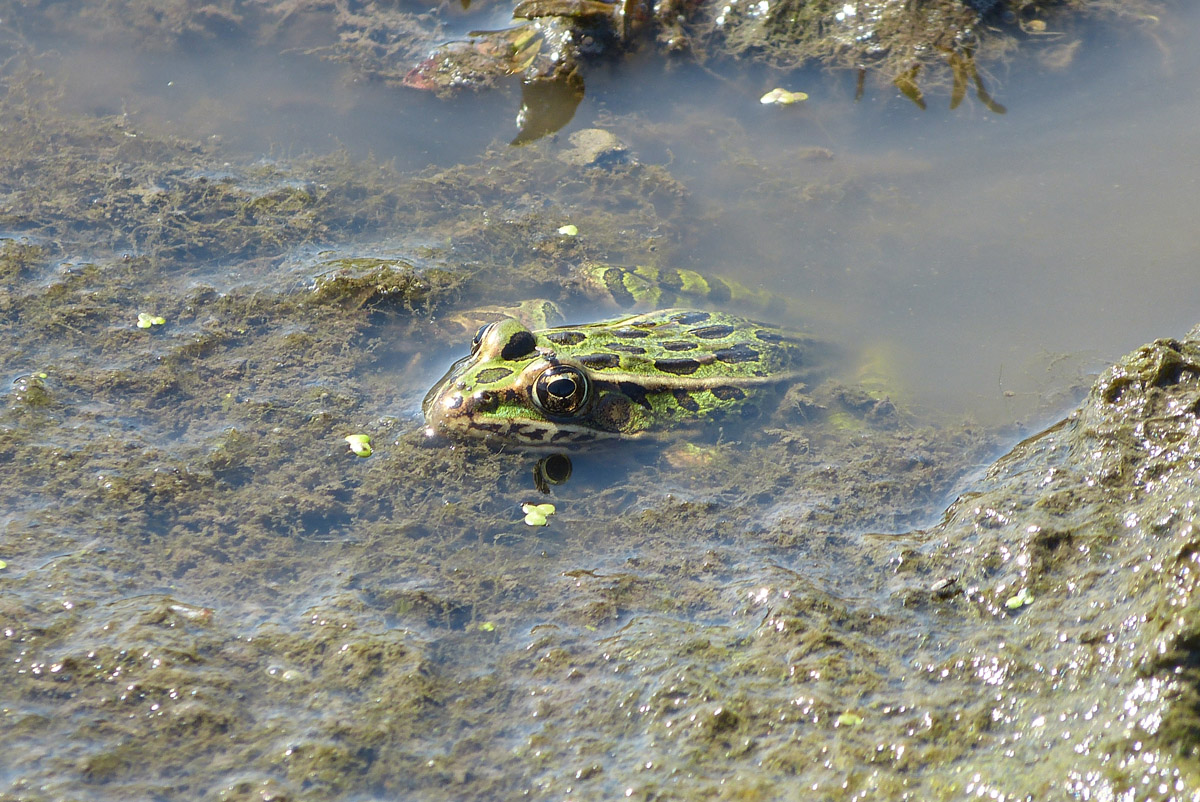Amphibian Occupancy and Effects of Habitat Use on Pesticide Exposure in Iowa Wetlands
Abstract/Summary
Amphibians living in agricultural areas encounter many challenges. Two factors affecting individuals in these landscapes are habitat loss and pesticides. This thesis focuses on amphibians using agricultural wetlands in Iowa, where row crops such as corn and soybeans dominate the landscape. The goal of of the first study was to determine the influences of site characteristics on amphibian presence and success. Occupancy analysis was used to estimate proportion of area occupied by four species as a function of eight covariates hypothesized to affect occupancy: fish abundance, salamander abundance, invertebrate density, vegetative cover, wetland area, water atrazine concentration, surrounding crop land use, and overall wetland health score. We surveyed 27 wetlands in 2015 and 2016. Occupancy analysis results indicate almost all covariates were supported in our model sets although their estimated effects were weak. Direction of predicted effects of covariates on amphibians varied by species and life stage. Results show that wetland site occupancy for species in our study ranged from https://0.23 to https://0.95. Although we did not find strong evidence that the environmental factors we measured influenced amphibian occupancy, we provide insight on amphibian use of a modified agricultural landscape. The goal of the second study was to understand where and when frogs are most susceptible to pesticide exposure and how that exposure relates to accumulation. We hypothesized habitat use would influence a frog’s exposure to pesticides. We radio tracked 72 Northern Leopard Frogs (Lithobates pipiens) in agricultural wetlands and assessed their survival. We used Passive Sampling Devices (PSDs) to test for differences in pesticide exposure among grassland, wetland, and agricultural habitats. We found that pesticide concentration analyzed from PSDs varied among habitat types (P < 0.01) with concentration greatest in agricultural habitats. Amphibians frequently used wetland habitats early in our study, and transitioned into grassland habitats later in the summer, using agricultural fields rarely. Number and concentration of pesticides were greatest in tissues collected in May, but few pesticides were detected in individuals captured in August (P < https://0.01 and P < https://0.01, respectively). Our results indicate risk of pesticide accumulation is highest in aquatic habitats earlier in the year.
Publication details
| Published Date: | 2018-03-09 |
| Outlet/Publisher: | US Geological Survey Data Release |
| Media Format: | URL |
ARMI Organizational Units:
Rocky Mountains, Southern - BiologySouthwest - Water
Northeast - Water
Topics:
Species and their EcologyStressors
Place Names:
IowaKeywords:
agricultureamphibians
ARMI
conditional occupancy
habitat alteration
habitat effects
habitat use
herbicides
monitoring
occupancy
pesticides
pond-breeding amphibians
stressors
surface water
water quality

